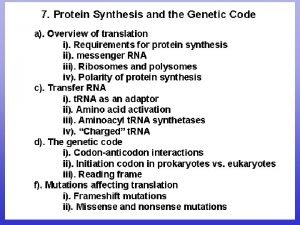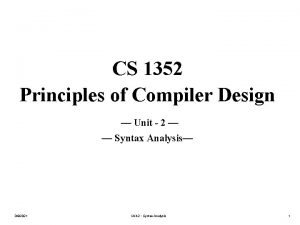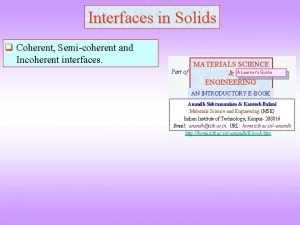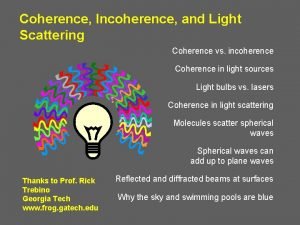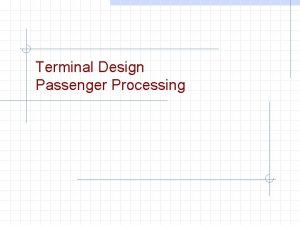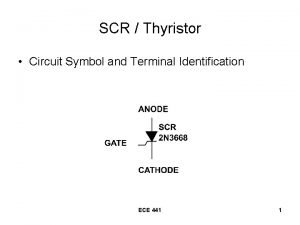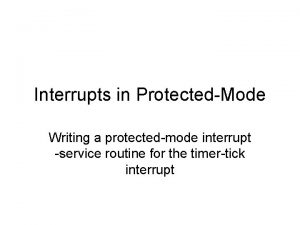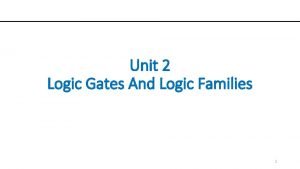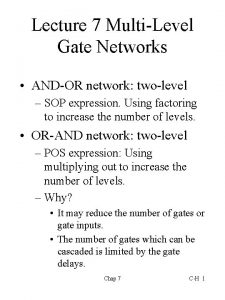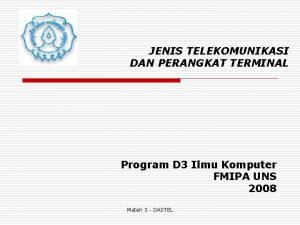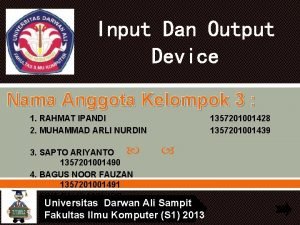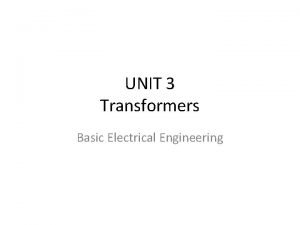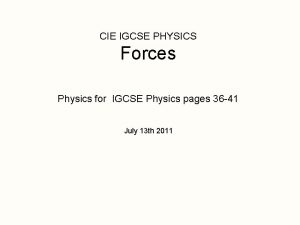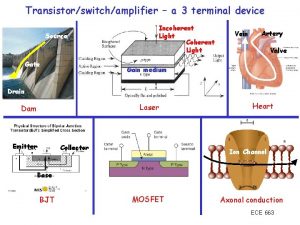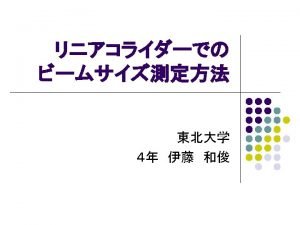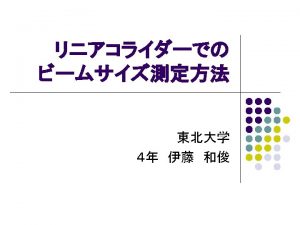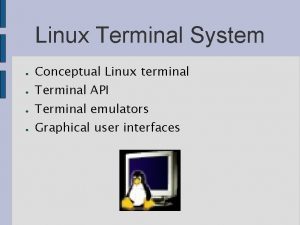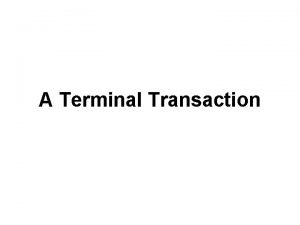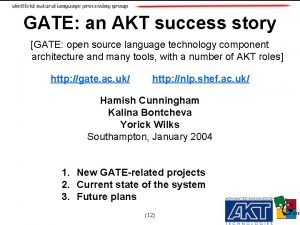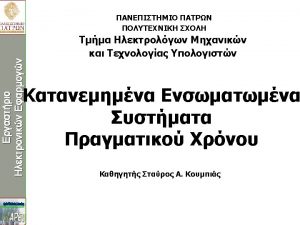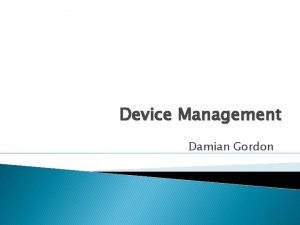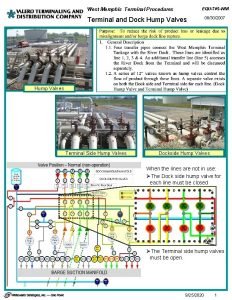Transistorswitchamplifier a 3 terminal device Source Gate Incoherent

























- Slides: 25

Transistor/switch/amplifier – a 3 terminal device Source Gate Incoherent Light Coherent Light Vein Artery Valve Gain medium Drain Laser Dam Emitter Collector Heart Ion Channel Base BJT MOSFET Axonal conduction ECE 663

All of these share a feature with… • Output current can toggle between large and small (Switching Digital logic; create 0 s and 1 s) • Small change in ‘valve’ (3 rd terminal) creates Large change in output between 1 st and 2 nd terminal (Amplification Analog applications; Turn 0. 5 50)

Example: BJT common emitter characteristics Gain = 300

http: //www. computerhistory. org/semiconductor/timeline. html#1940 s

Aim of this chapter • How can we get ‘Gain’? • What is the structure of the device to get gain? • What is the equation for gain? • How can we use this equation to maximize gain? • How can we model this device as a circuit element? • What are its AC characteristics and speed?

Recall p-n junction W + P N N P W + - - Vappl < 0 Vappl > 0 Forward bias, + on P, - on N (Shrink W, Vbi) Reverse bias, + on N, - on P (Expand W, Vbi) Allow holes to jump over barrier into N region as minority carriers Remove holes and electrons away from depletion region I I V V

So if we combine these by fusing their terminals… N P W + - Vappl > 0 P N W + - Vappl < 0 Holes from P region (“Emitter”) of 1 st PN junction driven by FB of 1 st PN junction into central N region (“Base”) Driven by RB of 2 nd PN junction from Base into P region of 2 nd junction (“Collector”) • 1 st region FB, 2 nd RB • If we want to worry about holes alone, need P+ on 1 st region • For holes to be removed by collector, base region must be thin

Bipolar Junction Transistors: Basics + - IE IC - + IB IE = I B + I C ………(KCL) VEC = VEB + VBC ……… (KVL)

BJT configurations GAIN CONFIG ECE 663

Bipolar Junction Transistors: Basics + - IE IC - + IB VEB >-VBC > 0 VEC > 0 but small IE > -IC > 0 IB > 0 VEB, VBC > 0 VEC >> 0 IE , I C > 0 I B > 0 VEB < 0, VBC > 0 VEC > 0 IE < 0, IC > 0 IB > 0 but small ECE 663

Bipolar Junction Transistors: Basics Bias Mode E-B Junction C-B Junction Saturation Forward Active Forward Reverse Inverted Reverse Forward Cutoff Reverse ECE 663

BJT Fabrication ECE 663

PNP BJT Electrostatics ECE 663

PNP BJT Electrostatics ECE 663

NPN Transistor Band Diagram: Equilibrium ECE 663

PNP Transistor Active Bias Mode VEB > 0 VCB > 0 Few recombine in the base Collector Fields drive holes far away where they can’t return thermionically Large injection of Holes Most holes diffuse to collector ECE 663

Forward Active minority carrier distribution P+ N P p. B(x) n. E(x’) n. C 0 n. E 0 p. B 0 n. C(x’’) ECE 663

PNP Physical Currents ECE 663

PNP transistor amplifier action IN (small) OUT (large) Clearly this works in common emitter configuration ECE 663

Emitter Injection Efficiency - PNP IE E ICp IEn IC C IB Can we make the emitter see holes alone? ECE 663

Base Transport Factor IE E ICp IEn IC C IB Can all injected holes make it to the collector? ECE 663

Common Base DC current gain - PNP Common Base – Active Bias mode: IC = a. DCIE + ICB 0 ICp = a. TIEp = a. Tg. IE a. DC = a. Tg IC = a. Tg. IE + ICn ECE 663

Common Emitter DC current gain - PNP Common Emitter – Active Bias mode: IE = b. DCIB + ICE 0 b. DC = a. DC /(1 -a. DC) IC = a. DCIE + ICB 0 = a. DC(IC + IB) + ICB 0 IC = a. DCIB + ICB 0 1 -a. DC GAIN !! IC IB IE ECE 663

Common Emitter DC current gain - PNP Thin base will make a. T 1 Highly doped P region will make g 1 ECE 663

PNP BJT Common Emitter Characteristic ECE 663
 Hardware output
Hardware output Riley-day syndrome
Riley-day syndrome Terminal and non terminal in compiler design
Terminal and non terminal in compiler design Cohesion example in writing
Cohesion example in writing First minima in diffraction
First minima in diffraction Chapter 9 great gatsby symbols
Chapter 9 great gatsby symbols Coherent thought
Coherent thought Coherent vs incoherent scattering
Coherent vs incoherent scattering Gate and terminal example
Gate and terminal example Symbol scr
Symbol scr Trap gate vs interrupt gate
Trap gate vs interrupt gate Boolean expression for nor gate
Boolean expression for nor gate Nand gate to and gate
Nand gate to and gate 3 terminal device
3 terminal device Jenis perangkat terminal adalah
Jenis perangkat terminal adalah A tagout device is preferable to using a lockout device.
A tagout device is preferable to using a lockout device. Monitor output
Monitor output Terminal velocity of a cat
Terminal velocity of a cat Nilson report pos terminal shipments
Nilson report pos terminal shipments Efficiency of transformer formula
Efficiency of transformer formula A neuron without terminal buttons would be unable to
A neuron without terminal buttons would be unable to Salah satu nilai terminal rvs
Salah satu nilai terminal rvs Inode 최대 개수
Inode 최대 개수 The terminal generation
The terminal generation Terminal velocity igcse physics
Terminal velocity igcse physics Montauk monster
Montauk monster

